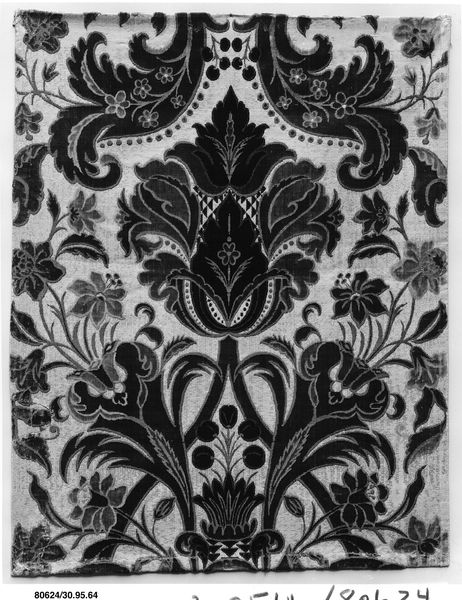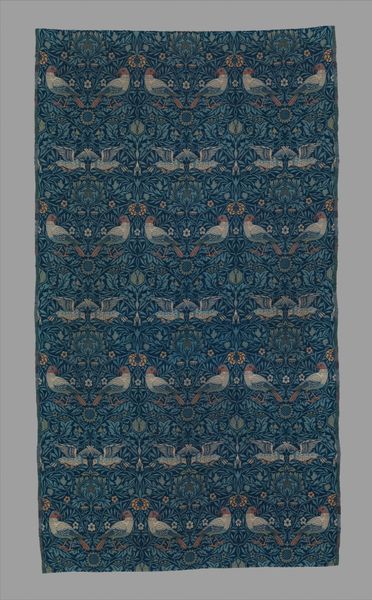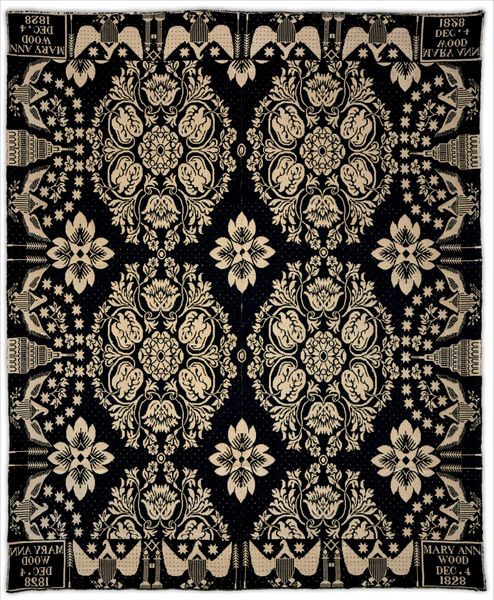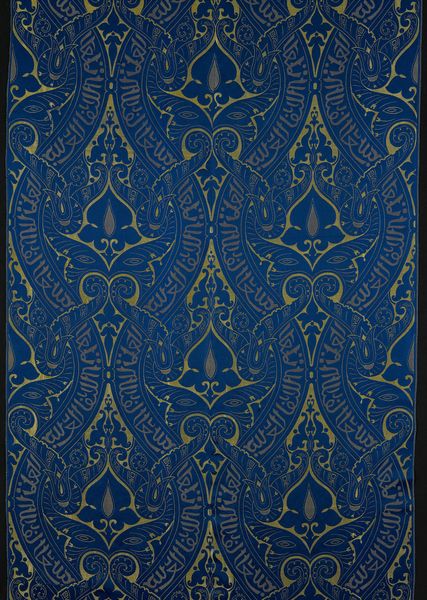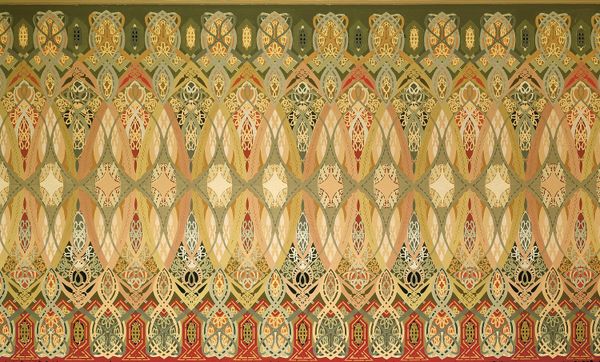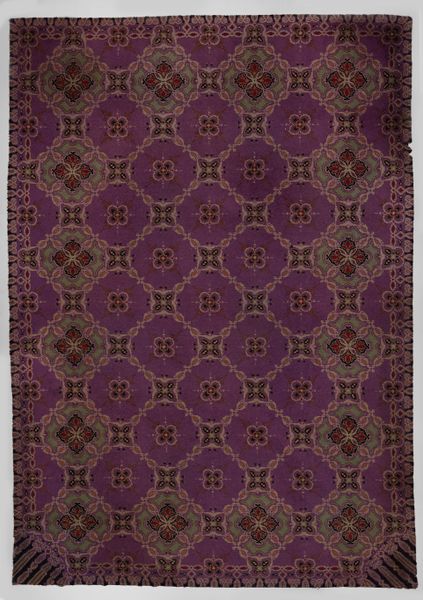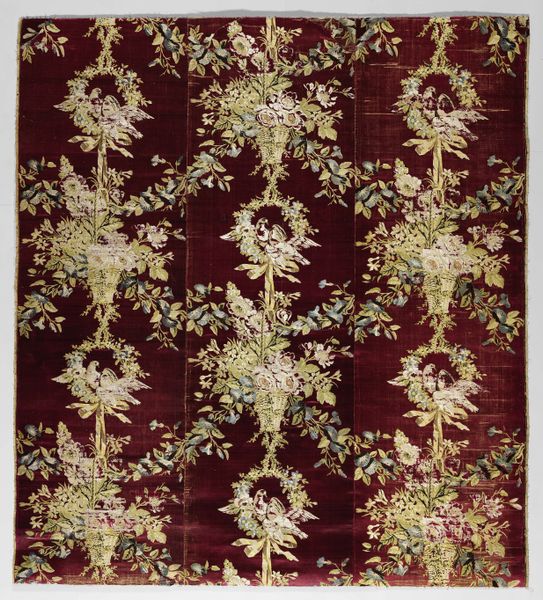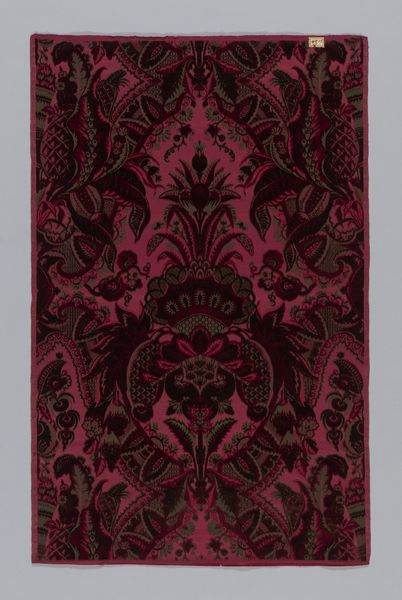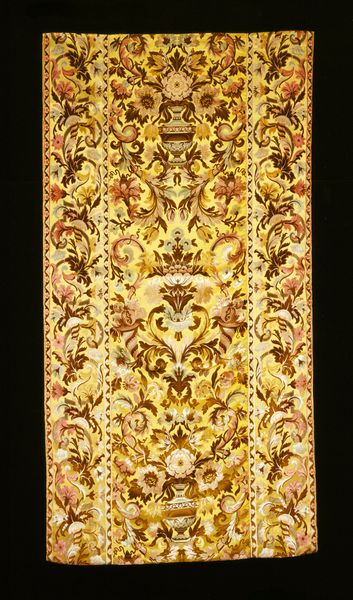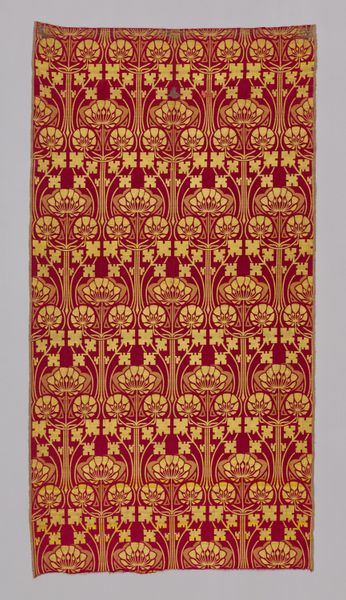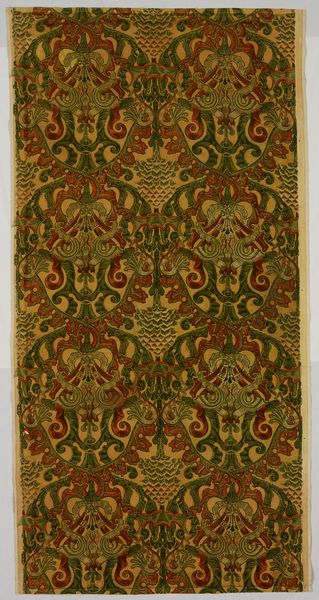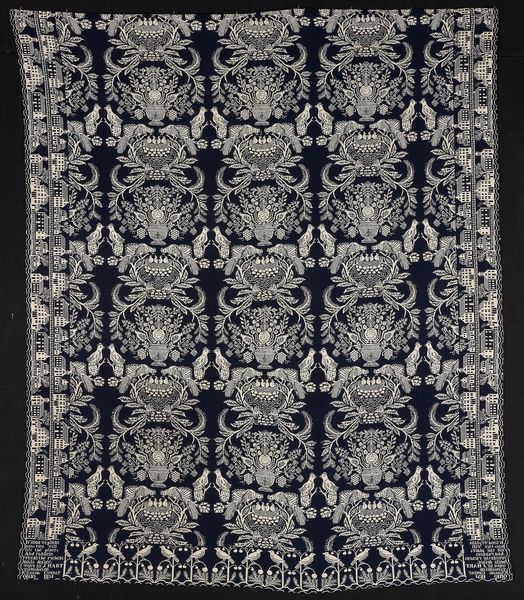
fibre-art, weaving, textile
#
fibre-art
#
arts-&-crafts-movement
#
weaving
#
textile
#
decorative-art
Dimensions: 248.1 × 129.5 cm (97 5/8 × 51 in.) Repeat: 103.3 × 64.2 cm (40 5/8 × 25 1/4 in.)
Copyright: Public Domain
Editor: Here we have “Panel (Furnishing Fabric),” crafted between 1885 and 1890 by Alexander Morton & Co. It's a vibrant textile piece, woven with what appears to be fibre. The strong purple really makes it pop, but also the overall design looks really traditional and decorative. What's your take? Curator: It’s fascinating to consider this as “furnishing fabric.” I immediately think about the labor involved in its creation, particularly given the Arts and Crafts movement context. We have to think beyond the surface decoration, towards the means of production and consumption embedded in each thread. Editor: How so? Curator: Think about the division of labor in Victorian textile mills, and then contrast it with the ideals of the Arts and Crafts movement: the revival of craftsmanship, a supposed emphasis on individual artistry, and the inherent social critique. To what extent was this textile truly “hand-crafted,” and for whose consumption was it intended? Was this available for the masses or made for the elite? Editor: So, it's not just a pretty pattern; it's a product of its time, reflecting both the artistic aspirations and the socio-economic realities of the late 19th century? Curator: Exactly. By examining the materials – the source of the fiber, the dyes used – we can uncover trade routes, colonial exploitation, and even the environmental impact of its production. It invites a materialist analysis that extends beyond aesthetics. It also challenges preconceived notions that blur boundaries between 'high' and 'low' art. Editor: That’s a much deeper perspective than I initially had. It’s made me rethink what "decorative" really signifies, especially when considering labour and economy. Curator: Precisely. Next time you see decorative art, consider what lies beyond and behind its superficial beauty.
Comments
No comments
Be the first to comment and join the conversation on the ultimate creative platform.


